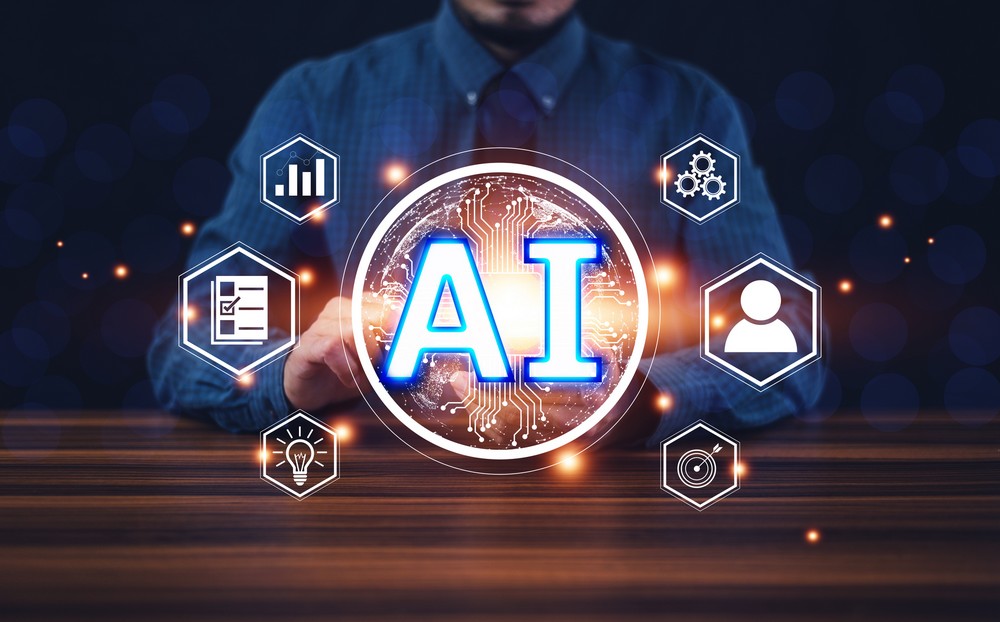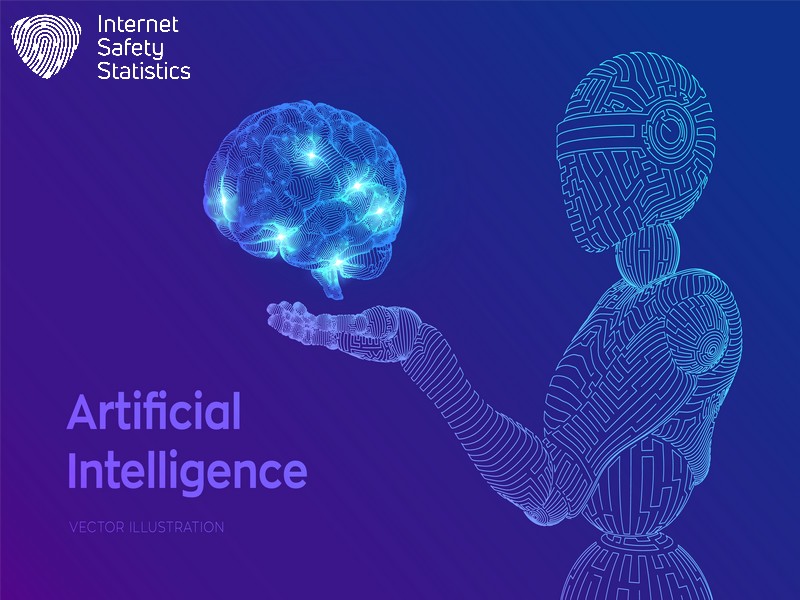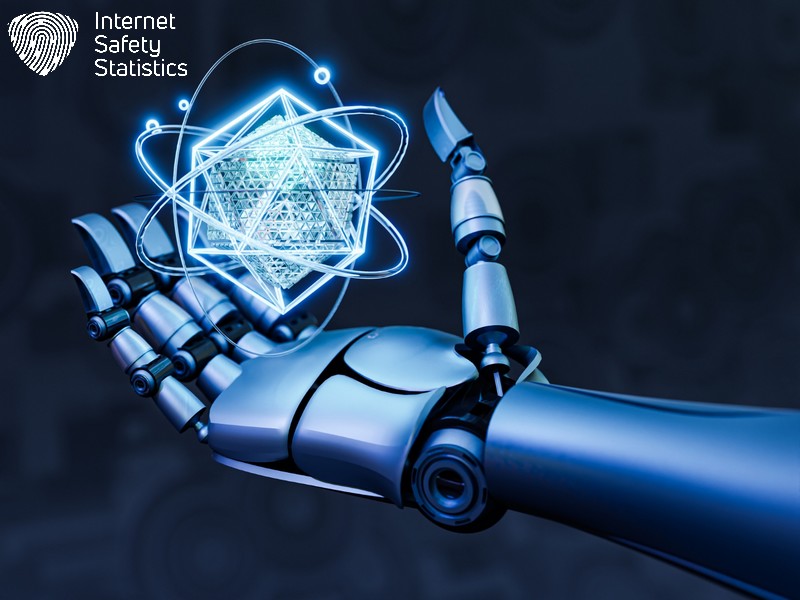
Cybercrime casts a growing shadow over the digital landscape, threatening individuals, businesses, and critical infrastructure. The ever-evolving tactics employed by cybercriminals necessitate a proactive approach to defence. Artificial intelligence (AI) is emerging as a powerful weapon in this fight, offering unique capabilities to predict and prevent cyberattacks.
AI algorithms can analyse vast amounts of data, including network traffic patterns and past cyberattacks. This allows them to identify subtle anomalies and suspicious activities that might escape human detection. By recognising emerging threats and predicting potential attack vectors, AI empowers security teams to take preventative measures, potentially thwarting cyberattacks before they can inflict damage.
This analysis explores AI’s role in the evolving landscape of cybercrime legislation. We will examine how AI informs legislative frameworks and guides the development of proactive cyber defence strategies. The discussion will explore the potential legal implications of AI-driven security measures and the ethical considerations surrounding this powerful technology. By examining these aspects, we can illuminate a future where AI is a crucial ally in safeguarding the digital world.
Keep reading to understand how AI keeps you safer online.
Understanding Cybercrime and AI
Cybercrime refers to illegal activities carried out using digital technology, including hacking, identity theft, and fraud. AI plays a crucial role in cybersecurity by using algorithms and predictive intelligence to detect and prevent cyberattacks.
Definition of Cybercrime
Cybercrime encompasses any criminal activity that targets or uses a computer, a computer network, or a networked device. Most, but not all, cybercrimes are committed by cybercriminals or hackers who want to make money.
Cybercrime can range from security breaches to identity theft. Other cybercrimes include things like “revenge porn,” cyber-stalking, harassment, bullying, and child sexual exploitation. Terrorists collaborate on the internet, moving terrorist activities and crimes into cyberspace.
To protect against these threats, cybersecurity measures must be robust and up-to-date, fending off cyber attacks before they cause harm. AI helps in this regard by scanning through vast amounts of data to detect potential risks and alerting users to the presence of malware before it’s too late. Digital assets require stringent protection measures – AI tools predict and counteract these threats with precision unmatched by traditional methods.
Role of AI in Cybersecurity
AI plays a crucial role in cybersecurity by leveraging advanced technologies to detect and prevent cyber threats. With the ability to analyse vast amounts of data, AI tools can efficiently identify patterns and predict future criminal activities, aiding organisations in safeguarding digital assets from malicious actors. By anticipating attack vectors based on historical data and patterns, AI contributes significantly to predicting and preventing cyber crimes.
Organisations are increasingly relying on AI-based tools to detect cybersecurity threats better. However, cybercriminals also incorporate AI into their attacks, making it vital for individuals and businesses to stay ahead of evolving threats.
AI’s Role in Detecting and Preventing Cybercrime
AI plays a crucial role in detecting and preventing cybercrime. It uses advanced algorithms to analyse data and identify potential threats. By employing AI, strategies can be implemented to prevent cyberattacks proactively before they occur.
Use of AI in Detecting Cybercrime
AI plays a crucial role in detecting cybercrime through its ability to analyse vast amounts of data and identify patterns associated with malicious activities. Leveraging natural language processing, AI can curate data on cyber threats and pinpoint potential risks before they escalate.
- AI technologies efficiently identify patterns and predict future behaviour, such as criminal activities.
- Integrating AI and predictive policing analytics with computer-aided response and live public safety video enterprises can help law enforcement better address criminal activities.
- AI can anticipate and prevent attacks by predicting vectors based on historical data and patterns.
- Organisations are leveraging AI-based tools to better detect cybersecurity threats, but cybercriminals are also using AI to launch more sophisticated attacks.
- AI is used to analyse past information about crime and predict future crimes, aiding law enforcement in preventing criminal activities.
Strategies for Preventing Cyberattacks
To prevent cyberattacks, organisations and individuals can implement the following strategies:
- Utilise AI-powered threat detection software to continuously monitor networks for potential security breaches.
- Implement multi-factor authentication to add an extra layer of security when accessing sensitive information.
- Regularly update software and security systems to patch vulnerabilities and protect against emerging cyber threats.
- Educate employees and individuals about best practices in cybersecurity, such as avoiding clicking on suspicious links or attachments in emails.
- Employ encryption techniques to safeguard sensitive data from unauthorised access.
- Conduct regular cybersecurity assessments to identify potential weaknesses and areas for improvement in existing security measures.
- Establish incident response plans that outline steps to take in the event of a cyber attack, ensuring a prompt and effective response.
- Collaborate with reputable cybersecurity firms to stay updated on the latest cyber threats and prevention trends.
- Invest in AI-driven threat intelligence platforms that provide real-time insights into potential risks and vulnerabilities.
- Foster a culture of cybersecurity awareness and vigilance within organisations by promoting a proactive approach to mitigating cyber risks.
AI Tools Used for Combating Cybercrime
AI tools such as deepfake detection, intelligent agents, and nanobots are used to combat cybercrime and protect digital assets. These advanced technologies play a crucial role in detecting and preventing criminal behaviour online.
Deepfake Detection
Deepfake detection utilises AI algorithms to identify and prevent the manipulation of digital assets through fake multimedia content. AI technologies can efficiently analyse video and audio files to spot inconsistencies that indicate potential deepfake manipulation, safeguarding individuals and organisations from falling victim to deceptive media.
By leveraging machine learning and facial recognition, AI tools can accurately detect deepfake content, contributing to enhanced cybersecurity measures in combating fraudulent activities online.
AI’s role in deepfake detection is crucial for protecting digital assets from cybercrime, as it empowers users to discern between authentic and manipulated multimedia content. AI for identifying deepfakes aids in preventing the spread of misinformation and deception across various online platforms, ultimately fortifying cybersecurity efforts by mitigating the impact of fraudulent activities on unsuspecting internet users.
Intelligent Agents
Intelligent agents, a form of AI technology, contribute to combating cybercrime by continuously analysing online activities and identifying potential threats. These agents can automatically detect suspicious patterns and anomalies in digital interactions, aiding in predicting and preventing cyber attacks. By leveraging sophisticated algorithms, intelligent agents can swiftly identify malicious behaviour within networks or systems, providing crucial support for cybersecurity efforts.
These advanced AI tools assist organisations in proactively responding to emerging cyber threats by actively monitoring data traffic and flagging potential risks before they escalate into full-fledged security breaches. Integrating intelligent agents allows for real-time threat assessment and rapid intervention, enhancing the overall resilience of digital assets against cybercriminal activities.
Nanobots
Nanobots play a vital role in cybersecurity by detecting and neutralising threats at the microscopic level. These minuscule machines can surveil digital infrastructures, identifying vulnerabilities and thwarting potential cyber attacks before they escalate. Nanobots leverage cutting-edge technology to patrol networks, making them invaluable in shielding digital assets from malicious activities.
By harnessing nanotechnology, these tiny yet powerful bots enhance the overall security of digital ecosystems. Integrating nanobots introduces a new layer of defence against cyber threats, contributing to a safer online environment for individuals and organisations.
Risks and Limitations of AI in Cybersecurity

The use of deepfake technology presents vulnerabilities in AI cybersecurity. Hackers may also exploit AI for cybercrime, and there are ethical concerns about biases in the data used by AI systems.
Vulnerabilities of Deepfake Technology
Deepfake technology has vulnerabilities that pose a significant cybersecurity threat. Cybercriminals can use AI to create highly convincing fake videos and audio, making it difficult for individuals and businesses to distinguish between real and fabricated content. This can lead to misinformation, fraud, and reputational damage, risking the security of digital assets.
In response to deepfake vulnerability, organisations must invest in advanced AI tools specifically designed to detect deepfakes effectively. These tools use sophisticated algorithms capable of analysing minute details within multimedia content, helping identify potential threats before they cause harm.
Possibility of Hackers Using AI for Cybercrime
Hackers may exploit AI technology to launch more sophisticated and targeted cyberattacks, leveraging its capabilities to automate and accelerate their malicious activities. By utilising AI algorithms, cybercriminals can analyse vast amounts of data to identify vulnerabilities in cybersecurity systems and craft more effective attack strategies, posing a significant threat to digital assets protection from cybercrime.
Furthermore, AI-powered tools could enable hackers to bypass traditional security measures by creating advanced malware that adapts and evolves in real time, making it difficult for conventional defences to detect and mitigate these threats effectively.
AI’s predictive capabilities also allow hackers to anticipate potential weaknesses in security protocols or even predict future attack patterns based on historical data analysis, enabling them to stay one step ahead of defensive measures.
Biases and Ethical Concerns
AI in cybersecurity raises valid concerns about biases and ethical considerations. Despite its advanced capabilities, AI systems can inherit or amplify biases present in the training data, leading to discriminatory outcomes.
Organisations must ensure that the algorithms powering AI technologies are regularly audited to uncover and address any inherent biases. Additionally, as AI becomes more intertwined with cybercrime prevention, strict ethical guidelines governing its use are needed.
This entails transparently addressing questions around privacy invasion and ensuring that AI tools are utilised responsibly in compliance with legal regulations.
Collaboration Between Human and AI in Cybersecurity

Human oversight in collaboration with AI is crucial to ensure ethical and effective cybersecurity measures. Advancements in AI-human collaboration will continue to play a key role in preventing cybercrimes.
Read more about the future of AI in legislation and cybercrime prevention in our blog.
The Importance of Human Oversight
Human oversight remains crucial in ensuring AI technologies’ accuracy and ethical use in predicting and preventing cybercrimes. Human intervention offers a critical layer of judgment and discernment to complement AI’s analytical capabilities, helping to address biases and ensure that decisions are aligned with moral and legal standards.
Combining human expertise with AI’s predictive capabilities can establish a more robust defence against cyber threats. Collaborative efforts between humans and AI enable greater transparency, accountability, and adaptability in addressing cybersecurity challenges.
AI technologies are powerful tools for detecting potential cyber threats, but human oversight is essential for interpreting nuanced situations where context and empathy play critical roles.
Advancements in AI-human Collaboration
Advancements in AI-human collaboration play a pivotal role in enhancing cybersecurity measures. Organisations are better equipped to detect and prevent cyber threats through improved integration of human oversight and AI technologies. AI’s advanced analytical capabilities empower law enforcement with predictive intelligence, enabling the anticipation of criminal activities based on historical data and patterns.
Moreover, the collaboration between humans and AI fosters a proactive approach towards digital asset protection from cybercrime, contributing to more effective crime prediction and prevention strategies. As technology evolves, embracing advancements in human-AI collaboration becomes crucial for avoiding emerging cyber threats.
The seamless integration of AI technologies with human expertise allows for a more comprehensive approach to cybersecurity. By leveraging AI’s predictive analytics, law enforcement can efficiently anticipate attacks while protecting digital assets from malicious online activities.
Future Predictions

The growing importance of AI in cybersecurity is evident, and it is predicted that the future will see even more advancements in AI legislation and cybercrime prevention. Keep reading to learn more about how AI can predict and prevent cybercrimes!
The Growing Importance of AI in Cybersecurity
AI’s role in cybersecurity is increasingly crucial as it can accurately predict and prevent cybercrimes. By analysing vast amounts of data, AI technologies efficiently identify patterns and anticipate future criminal behaviour, aiding law enforcement in preventing malicious activities.
Organisations are leveraging AI-based tools to detect cybersecurity threats better, but cybercriminals are also using AI to launch more sophisticated attacks. Therefore, integrating AI with predictive policing analytics and live public safety video enterprises can significantly improve law enforcement’s ability to address criminal activities.
Furthermore, AI significantly protects digital assets from cybercrime by detecting and preventing malicious activities through its analytical and predictive capabilities.
Predictions for the Future of AI in Legislation and Cybercrime Prevention
AI’s future in legislation and cybercrime prevention looks promising. As AI advances, its predictive capabilities will help in the early detection and prevention of cybercrime. As technology develops, AI will be increasingly vital in cybersecurity measures, protecting digital assets from malicious activities.
Integrating AI into legislation will enhance crime prediction and prevention by leveraging advanced analytical and predictive capabilities. Furthermore, as organisations continue to adopt AI-based tools for detecting threats in cybersecurity, individuals must stay informed about potential cyber risks.
FAQs
What does AI do to help prevent cyber crimes?
AI helps predict and prevent cyber crimes by analysing patterns, enhancing cybersecurity measures, and alerting authorities about potential threats.
How is artificial intelligence used in crime detection?
In crime detection, artificial intelligence quickly examines large amounts of data to identify suspicious activities and assists police with insights for faster action.
Can AI improve the criminal justice system?
Yes, AI can benefit the criminal justice system significantly by providing predictive intelligence that aids in decision-making processes and improving AI in police training.
Is technology regulation important when using AI to fight crime?
Absolutely! Technology regulation is crucial as it ensures digital governance of how AI technologies are implemented responsibly within the legal framework to fight crime effectively.
Does AI have a role in legislative processes related to cyber security?
Indeed, through predictive analytics and threat assessment capabilities, AI plays a key role in informing legislative processes aimed at strengthening cybersecurity laws.
